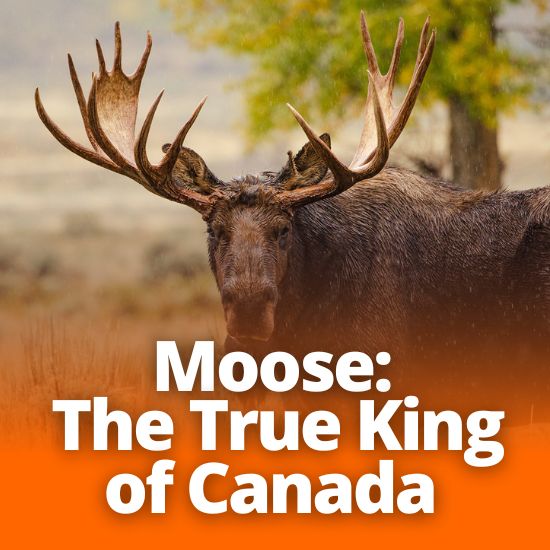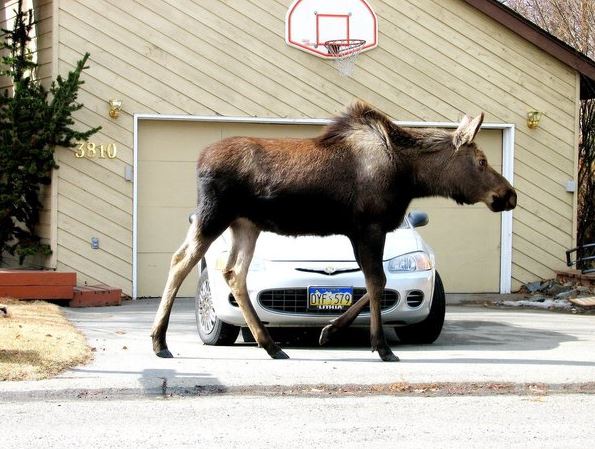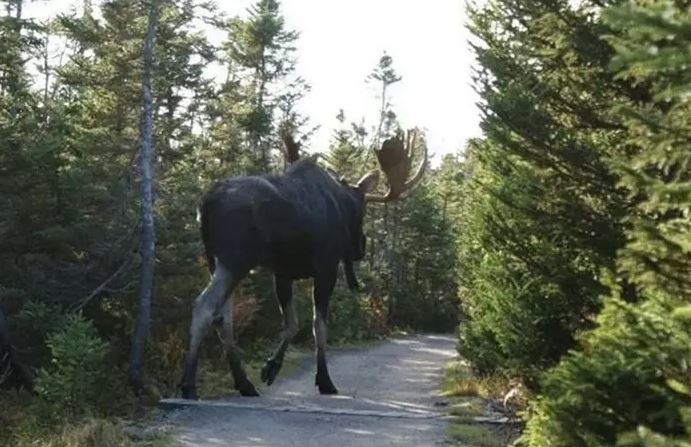
Moose: The True King of Canada
Did you know that some Canadian schools will go into lockdowns if a moose ends up too close? It’s true – I lived it. Yet, people are always shocked at how big a full-grown moose actually is. They are absolute units. At the shoulder the average male moose can be six feet tall – that doesn’t include the neck, head or antlers! On average they will be about 1600 pounds, the largest on record in Alaska was estimated to be 1800 lbs! To put that in perspective the average Ford F150 is only about 6 ft tall…a full-grown moose will easily see over it!
Of course at first glance despite the size, the moose is one of the most awkward yet somehow adorable (I think it’s the occasional fluffiness during certain seasons) looking creatures seen outside of Australia. A big, knobby head, lanky legs and a trunk like torso. It looks like you asked a child to draw a horse by only describing a horse to them. And yet, this cartoon reject lives on as a Canadian mascot; yes our official mascot is the beaver, but doesn’t the moose just make more sense? Weird, kinda shy, occasionally violent. Other countries have lions, or tigers, or bears (oh my) – Canada, we have moose and beavers (there’s a ‘someone walks into a bar’ joke there somewhere…)
Moose are generally considered fairly docile (unlike a Canada Goose, which is the spawn of Satan), and entirely vegetarian, and not the way your cousin Angie says she’s vegetarian except for bacon. They tackle twigs and leaves as well as bark and aquatic plants. Like horses and cattle, they also enjoy salt and will seek out natural mineral licks that can be found in swamps, springs, and mud – and have even been seen licking at salt deposits alongside roads during the winter.

Also, and this is going to sound absolutely insane, they swim…really well. Like, dive to the bottoms of lakes and rivers well enough that they’ve encountered orcas…and been eaten by them.
Orca v. Moose, the showdown you never thought could happen.
These guys aren’t generally aggressive, but you really should just leave them alone. Every good Canadian knows to be hesitant around these giants of the forest, so if you see some out-of-towners getting a little too comfy maybe gently remind them that a moose can travel 35 miles per hours (that’s over 50 kilometers per hour, they’d get pulled over in a school zone) and can kick hard enough to kill or seriously injure a predatory animal like a wolf or bear, oh and unlike horses they can kick in different directions. Also, the antlers males have aren’t just for show. They can grow to be 6 feet wide and are used in combat against other bulls during mating season; they can and will use them against a very squishy human.
Oh and every year people in Canada die because they’re hit by a moose while driving…not the moose, no, the people in the car. You’re more likely to die impacting a moose than the moose is. (Mythbusters did a whole segment on it)

Now again, they’re not generally aggressive, but they also aren’t going to bolt like a deer would when they see you. No, this living legend will stare you down like they do not know death and if you make the wrong move…do you remember the wildebeest stampede scene in Lion King? Remember how that went for Mufasa despite the fact that he should’ve been on the top of the food chain; humans are Mufasa in this scenario: arguably more dangerous but can get absolutely destroyed because, again, squishy. Avoid getting close to them because thanks to their size, weight, and general impulsivity of action (will they run or will they charge; sung to the tune of Should I Stay or Should I Go by the Clash) they have been known to attack people and vehicles if they feel threatened.
These guys are found all across Canada and into the US and are gorgeous, unique animals. So, give them the respect of their space and don’t get turned into a mountain shish-kebab.
(Information from Backcountry Canada Travel; The Canadian Encyclopedia; Nature Conservancy Canada; Canadian Geographic)
